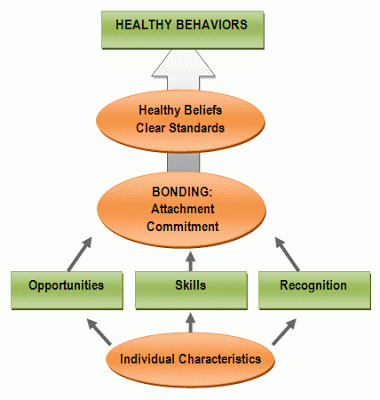A Drum is a Powerful Prevention Tool
Written by Kenya Masala
As we continue to answer the question of proven scientific benefits to youth drumming programs, we explore yet another study.
Educators and program directors interested in scheduling a rhythm or drumming based program for schools, may not have time to read though entire studies to – yet, you need to know this unequivocally to spend your program dollars wisely.
Because we know that interactive drumming and rhythm programs deliver a spectrum of incredible benefits to children and youth, we've done the work for you.
Research shows that drumming can prevent the development of conduct problems, school misbehavior, truancy, drug abuse, interpersonal violence and unhealthy risk taking - all known as youth prevention. Rhythm can do all that?
As an educator or youth development specialist, you know that prevention is powerful stuff. As young people develop, there are all manner of choices that can lead to unfavorable consequences; it's part of learning, growing and maturing. Though it's important that youth have learning experiences (there is no better teacher than life), there are choices and behavior patterns that are best avoided. Thus, the power of prevention.
There are ways to inspire young people to make healthy choices (and prevent drug addiction and experimentation, unwanted pregnancies, STI's etc.). The key word here is inspire. Research shows over and over that scare tactics are simply poor methodologies for behavior change. U.S. Department of Health and Human Services National Institutes of Health science panel found in 2004 that programs that rely on scare tactics to prevent children and adolescents from engaging in violent behavior are not only ineffective, but may have damaging effects. When exaggerated dangers, false information or biased presentations are delivered, teens tend to disbelieve the message and discredit the messenger (J. Beck, 1998).1

Drums and rhythm programs inspire – drumming is powerful prevention. Here's how it works.
Two professors from the University of Washington, Richard F. Catalano and J. David Hawkins researched and developed an incredible prevention model called The Social Development Strategy. SDS demonstrates that there are protective factors and protective processes that prevent people who are exposed to risk from developing health and behavior problems.2 'Protective factors' is the scientific term for 'that which mitigates the effects of exposure to risky behaviors.'
The SDS model focuses on getting to one thing: healthy behaviors. And, the most powerful and direct way to get there is through pro-social bonding – this means establishing healthy relationships. According to the research, bonding (which yields healthy behaviors) will only take place if three things occur:
- Youth must be given the opportunity for involvement in productive, pro-social roles;
- Youth must be given the skills to be successfully involved in those roles; and,
- Youth must be given the recognition and reinforcement for their pro-social involvement.
How's this connected to drumming? Excellent rhythm program facilitation integrates these three factors in every program.
- In a ZaBoomBa rhythm/drumming experience, youth are always
given the opportunity for involvement in productive, pro-social roles
right there in the jam, the drum circle, or the rhythm activity – it's
at the core of the experience.
- In a ZaBoomBa rhythm/drumming experience, youth are always given
the skills to be successfully involved in the roles. An inviting,
engaging facilitator is always modeling the skills, encouraging these
skills, and even teaching these skills directly. Skills like listening,
creating space for other voices, honoring each unique contribution, and
even how to play the instruments.
- In a ZaBoomBa rhythm/drumming experience, youth are always given recognition and reinforcement for their pro-social involvement. The encouragement, the smiles, the thumbs up, the praise in windows of communication – these happen as a natural part of the rhythm experience.
SDS research shows that the bonding factors protect against the development of conduct problems, school misbehavior, truancy, drug abuse, interpersonal violence and unhealthy risk taking. Rhythm programming is an actuation of this science – a direct connection to the experience of bonding: an excellent rhythm program inspires bonding.
Drumming programming is prevention programming.
Rhythm programs are among the most incredibly engaging and inspiring sessions your students or youth participants will ever experience. And now you also know - they are among the most effective in their learning content. In your search for proven youth prevention sessions, rhythm programs inspire prevention with a groove!
Only ZaBoomBa programs are designed with this science at the core of the program's development and delivery. Our facilitators are trained with this science and awareness as the foundation. When you bring a ZaBoomba rhythm or drumming program to your school or youth program, you can be confident, you are getting excellent prevention programming and youth development.
And, we can help you get this kind of programming in-house with our powerful in-service training. Contact us, we'll bring the power of rhythm to your school.
*The Social Development Strategy is developed by the Social Development Research Group. See:http://www.sdrg.org/index.asp for the full overview.
1 Don’t Do It! Ineffective Prevention Strategies;http://www.cde.state.co.us/cdeprevention/download/... accessed October 29, 2010
2 Projects; http://www.sdrg.org/projects.asp accessed October 29, 2010
---------------

by Kenya Masala
Sharing his love of rhythm and drumming within corporations, classrooms and communities, Kenya Masala is a recognized and respected trainer and facilitator across the country. Masala's original Rhythm Play!™ activity book and Zaboomba drumming programs introduce activities that integrate music within classroom and team development environment, and are accessible to teachers, educators and facilitators through easy-to-teach lessons that are adaptable to the ages and abilities of students and participants.
Recent Posts
-
What is the Best Size Djembe for Beginners?
If you're new to the world of percussion and interested in learning the djembe, you're in for a t …16th Jul 2024 -
The Benefits of Becoming a Drumming Teacher: Transforming Passion into Profession
Why become a drumming teacher? Becoming a drumming teacher is an excellent way to share your pas …22nd May 2024 -
What Makes the Djembe Drum a Spiritual Instrument in African Music?
Origin and history of the Djembe drum The Djembe drum originates from West Africa and holds sign …16th May 2024



